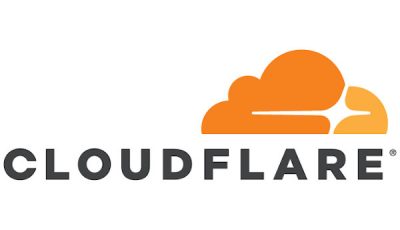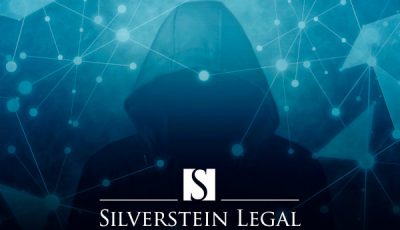Copyright Rules For Inline Linking, Embedding Not So “Settled,” After All?
 In a recent article for IPWatchdog.com, intellectual property attorney Ross Bagley wrote that new copyright law in the European Union, along with decisions issued earlier this year in the Northern District of California and Southern District of New York, “suggest that what was once thought to be non-infringing inline linking may now require service providers to obtain licenses or face claims of infringement.”
In a recent article for IPWatchdog.com, intellectual property attorney Ross Bagley wrote that new copyright law in the European Union, along with decisions issued earlier this year in the Northern District of California and Southern District of New York, “suggest that what was once thought to be non-infringing inline linking may now require service providers to obtain licenses or face claims of infringement.”
Inline linking, also commonly called “embedding” content, has long thought to be a non-infringing use of copyrighted content under the “server test” established in Perfect 10 v. Amazon.com. As YNOT previously reported however, U.S. District Judge Katherine B. Forrest declined to rule that the server test protected the defendants in Goldman v. Breitbart News Network, one of the cases cited in Bagley’s article.
“In her opinion denying the defendants’ motion for summary judgment, Judge Forrest rejected application of the server test to the display right, writing that ‘outside of the Ninth Circuit’ the server test ‘has not been widely adopted’ to the right of public display,” Bagley noted. “In declining to apply the server test to the right of display, the court made a critical distinction between content that is shown on a service provider’s website using inline linking, which implicates the display right, and content that was merely distributed to users from a text hyperlink’s destination URL, which does not.”
While the Goldman case was settled back in May, as Bagley observed, it’s not the only recent case in which a court has found that the server test does not apply outside of circumstances that are factually similar to the Perfect 10 case.
“In June 2019, a decision from the Northern District of California, Free Speech Sys., LLC v. Menzel… cast further doubt on the applicability of the Server Test to the display right outside of the context of an internet search engine, even within the Ninth Circuit,” Bagley wrote. “The Northern District Court acknowledged that the server test was precedential authority in the Ninth Circuit, but elaborated that ‘subsequent cases have refused to apply the Perfect 10 server test outside of [the search engine] context…’ and that ‘[plaintiff] has not provided any case within the Ninth Circuit applying the server test outside of the search engine context.’”
As Bagley noted, the “trend in both cases is to elevate the substance of the user experience over the coding architecture behind the presented content.”
Meanwhile, under the EU’s Directive on Copyright in the Digital Single Market, Bagley pointed out that “one component of the Directive seeks to cut publishers in on internet service providers’ income from websites that use inline linking.”
The component Bagley referred to is Article 15 of the Directive, which has been widely dubbed a “link tax.” As Bagley explained, Article 15 “provides new copyright protection to ‘online use of [publisher’s] press publications by information society service providers’ and requires European Union member states to provide publishers a right to negotiate licenses with online service providers for inline linking to publisher content, excluding only ‘hyperlinking’ or ‘use of individual words or very short extracts of a press publication.’”
“As a result of this change, where an internet service provider in the European Union has previously embedded a publisher’s news story on its website without fear of liability, now it must negotiate a license for the inline linking use,” Bagley added.
Attorney Larry Walters told YNOT he sees the potential impact of the Goldman and Menzel rulings as having less potential impact going forward than the EU’s Directive on Copyright.
“Given the drastic impacts on internet functionality, I suspect most courts would be hesitant to follow the Goldman holding,” Walter said. “It seems that the judge in the Goldman case was concerned about the fact that the original, linked content was pirated. Perhaps a different test will evolve when the link is to pirated content as opposed to content that is posted by the owner/licensee.”
“The ‘server test’ is settled law in the Ninth Circuit, at least with respect to the search engine business model,” Walters added. “However, as advancements in technology occur, courts may be willing to take a fresh look at the scope of the display right under the Copyright Act. The server test is well-reasoned, but can create difficulties for copyright holders looking to monetize their content online. The EU Copyright Directive is a completely different matter, and has the potential to significantly disrupt the online ecosystem as we know it.”
While the two attorneys differ somewhat in their opinions on the significance of the two U.S. cases at hand, they do agree that the upshot of these developments remains uncertain. It’s unclear what new copyright rules various EU states will develop in response to the new Directive on Copyright – and just as unclear whether other American courts will adopt the reasoning applied in Goldman and Menzel cases. What is clear, Bagley opined, is that some of what we have all assumed is “settled law” with respect to inline linking is more unsettled than we thought.
“As more of the copyrighted content we consume is delivered through an increasingly connected internet, the rules service providers face for unauthorized linking will continue to evolve,” Bagley wrote. “The growing trend in both the Goldman and Menzel cases in the United States and the Directive’s ‘link tax’ in the European Union is more opportunity for owners and creators to monetize content that drives traffic to online service providers’ websites. As content aggregation continues to flourish, content owners/creators and service providers alike should stay aware of developments that may create opportunities for licensing, or carry the risk of liability from inline linking.”













